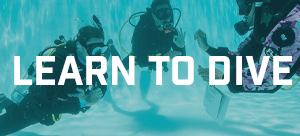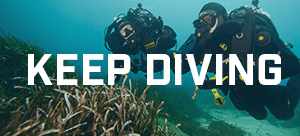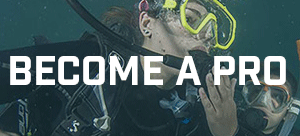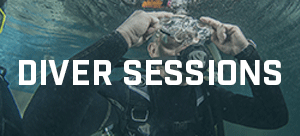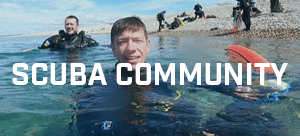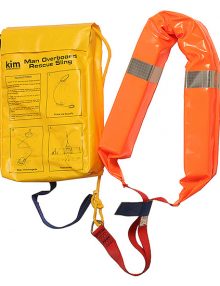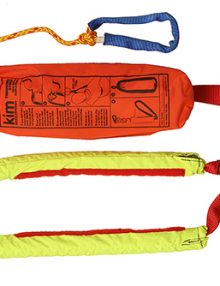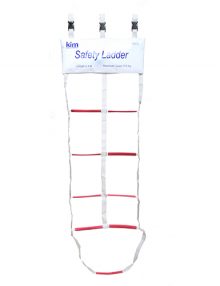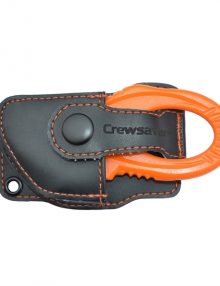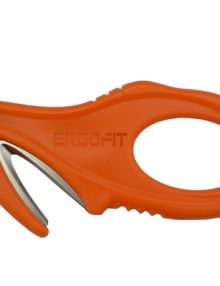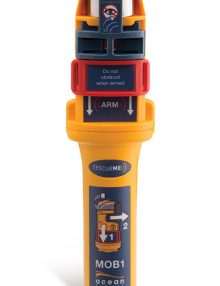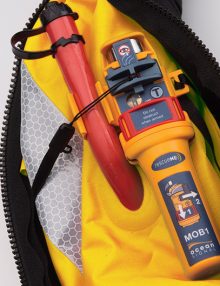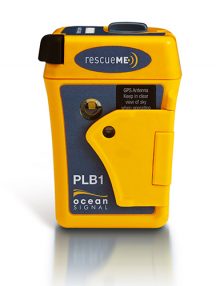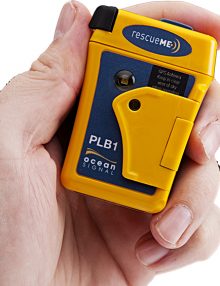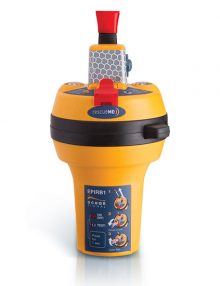SAFETY & SURVIVAL ADVICE
“Whether you are starting out, on , in or above the water, or looking to upgrade your existing equipment, we have a comprehensive range of personal and boat safety equipment.with over 30 years experience of teaching Scuba Diving, Andark can offer a vast choice of Scuba Diving Lessons/Qualifications for every need from ‘Padi Openwater’ to ‘Instructor Level’. Achieve your PADI Scuba Diving Qualification with us.”
PERSONAL EQUIPMENT
For just about every activity on the water you will need to wear your own lifejacket or buoyancy aid. Buoyancy Aids tend to be used for very active watersports (i.e. dinghy sailing, kayaking, sup, kite surfing and canoeing). These have permanent buoyancy, they are designed to give you extra buoyancy and keep you afloat whilst in the water. Most Lifejackets do not have a permanent buoyancy but are inflated by activating a small co2 canister which will then inflate the jacket. Lifejackets and buoyancy aids are rated in Newtons of Buoyancy. (e.g. most buoyancy aids are 50newtons shown on the inside of the jacket with a CE mark as 50N). Lifejackets normally start at 150Newtons (150N) and go up to 290 Newtons (290N).
Lifejackets are categorised as being either manual or automatic inflation. A manual jacket means that to inflate it, you have to pull a cord which will activate and inflate the lifejacket. This type of jacket tends to be used where the person is immersing themselves regularly, perhaps when launching and recovering a small boat, using personal watercraft. Normally all lifejackets used for aviation and within an enclosed cockpit racing vessel, would be a manually operated jacket. For most other on water activities we would recommend an automatic inflation lifejacket. With this type of jacket, even if you were unconscious, once you enter the water the lifejacket would automatically inflate and turn you face up in the water. All jackets , whether manual or automatic, can be orally inflated/topped up by means of an oral inflation tube. For automatic lifejackets there are two main types of activation /firing mechanisms. One is water activated and the other is pressure activated. Can be referred to as Hammar action. Both are extremely reliable. Please see the lifejacket page for more information.
Lifejackets can be bought with or without a harness beckett fitted. Lifejackets should also have a spray hood fitted if you are planning to use the jacket on offshore or in more extreme conditions and have a emergency light fitted if they are to be used at night. All lifejackets should have leg/crotch straps fitted when worn, this prevents the lifejackets from riding up when in the water. For babies and very young children this type of lifejacket is NOT suitable. Permanent buoyancy foam lifejackets are recommended for this situation.
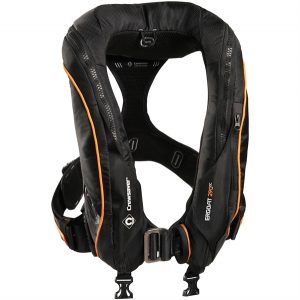

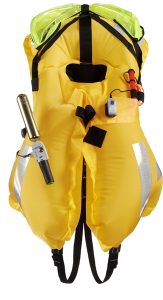

Life rafts and overboard recovery systems
Depending on the size of your boat and the number of people who will be aboard, for most leisure vessels, a standard Life raft will suffice. These are suitable for coastal and short offshore recreational boating and non-coded craft. Life rafts are classed as either 4, 6 or 8 person and so on for larger vessels. Life rafts are packed in either a valise – this type is normally stowed below deck or in a suitable locker or in a canister which are normally stowed in a cradle on deck. A Liferaft must always be accessible and ready for use.
Life rafts come with safety packs – they are classed as less than 24 hours . Life rafts normally come with flares – the class of raft will depend on the number and type of flares supplied.
For charter and commercial use. You will probably need an ISO/SOLAS raft. More information is available at the Liferaft page. Please feel free to contact us for advice on choosing a raft – sharon@andark.co.uk
Life rafts will need regular servicing. Normally done at 3 yearly intervals.
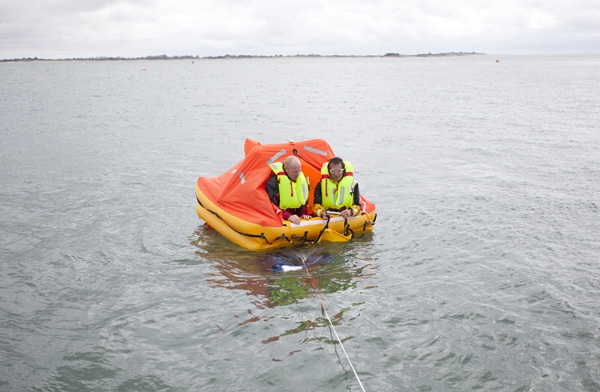

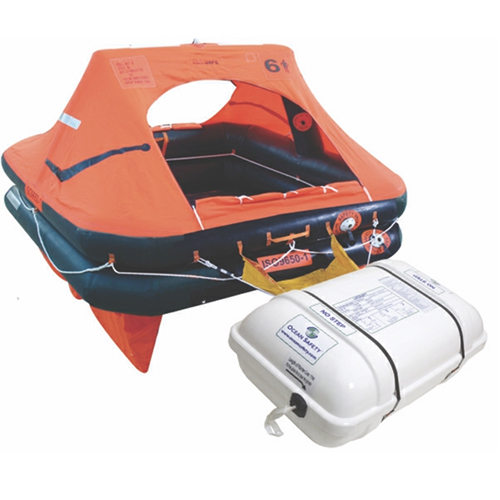

FLARES & EMERGENCY EQUIPMENT
Flares are designed to attract attention should you need assistance or rescue. They are also used as a warning. Red flares are used to attract attention for rescue and emergency situations. White flares are used for collision warning and for illumination.
Flares can be purchased individually although most people would buy a pack of flares to suit their needs (e.g. inshore/offshore or ocean use). All of these come in a watertight container. Flares only have a limited life. If they get excessively damp or wet they may not fire. They must always be kept in dry conditions, in an accessible area but out of reach of young children. They must be handled in the correct way as they can cause a fire or injury if they are misused or stored inappropriately.
It is a good idea to also have a grab bag which normally includes items which you need to take with you in the event of abandonment of vessel. It can include hand held radio, extra clothing, food, safety knife, flares , water and anything else you consider as a life saving essential item.
It is usually In a dry bag with roll top closure to prevent water ingress. There are also available electronic distress signalling devices. Some of which give over 5 hours of continuous use and can last many years.
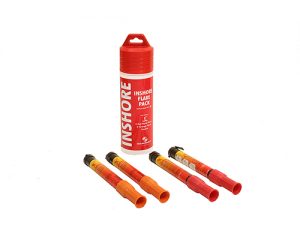

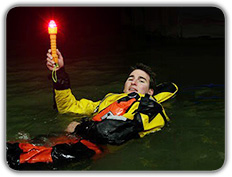

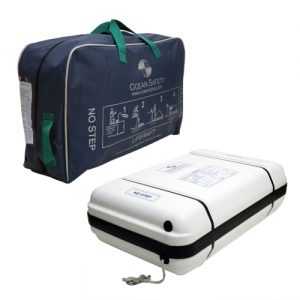

Overboard recovery systems
In the event of someone falling off the boat it is really important to consider how you may get them safely back on board and help them to stay afloat while you are coming to their rescue. With a small boat (e.g, a rib or dinghy or small speedboat) it might be that you can just pull them out of the water straight over the side of the boat. However, for larger boats, cruising yachts and motorboats an overboard recovery system is important and can save lives. There are several different types and styles on the market . Hopefully the person who falls off the boat is wearing a lifejacket but they may not be so it is very good to have available a floatation device which can be quickly thrown into the water to help keep the person afloat, some of these devices have a throw line attached to them so if they are close enough or once you have turned the boat around and are near to them, you can throw them the floatation device and pull them in alongside the vessel. A more sophisticated device which is stowed on deck so that it can be used immediately is an inflatable recovery module. This allows the person to climb into the unit , keeping their upper body out of the water which cuts down rapidly on their heat loss. This device has lifting strings attached which makes it easier to recover the person from the water. There are other products listed on our website – throw lines are excellent to have on a boat as well as the emergency floating safety ladders.
ELECTRONIC SIGNALLING RESCUE AIDS
There are several products on the market which greatly increase your chances of rescue. In an emergency these can be activated to send a signal via the satellite system to the nearest monitoring station . they are part of a global network. We normally refer to these as EPIRBs or those that are carried by the person (either fitted to a lifejacket or kept in a pocket) are referred to as personal Locator Beacons (PLBs). In an emergency, once activated, send a signal .
There is a new device called an AIS (Automatic identification system) this can be fitted to your lifejacket so that it will activate automatically on inflation of the lifejacket. This device does not send a signal by satellite, however, it transmits to any AIS enabled equipment or integrated DSC transmitter that your boat or any other vessel in the local area pinpointing exactly where you are in relation to the vessel. If you are operating offshore or deep ocean and every member of the crew has an MOB fitted to their lifejacket and your vessel has the appropriate AIS/DSC equipment, then this would be the fastest way to find and recover someone who has fallen into the water.
If you are going cruising or would like assistance in choosing the right gear for your boat, please contact us and we will endeavour to assist you – sharon@andark.co.uk

